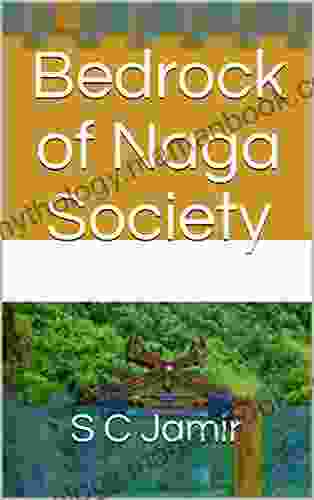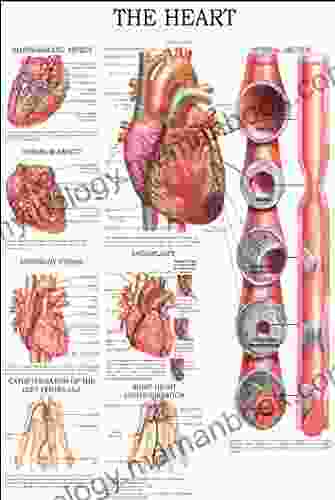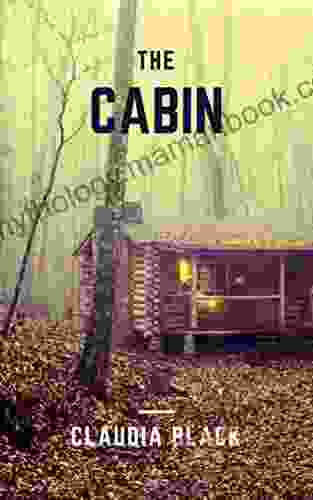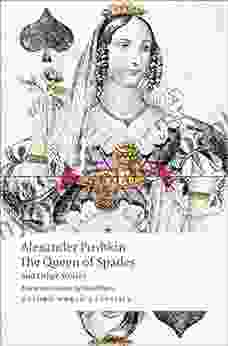Dancing Dolphin Patterns: The Bedrock Of Naga Society

5 out of 5
| Language | : | English |
| File size | : | 730 KB |
| Text-to-Speech | : | Enabled |
| Screen Reader | : | Supported |
| Enhanced typesetting | : | Enabled |
| Word Wise | : | Enabled |
| Print length | : | 21 pages |
| Lending | : | Enabled |
: A Cultural Tapestry
In the vibrant tapestry of Northeast India, the Naga people stand out as a fascinating cultural group with a rich and diverse heritage. Amidst their intricate traditions, one element that holds immense significance is the prevalence of dolphin patterns in their art, crafts, and cultural practices. These patterns are not mere decorative motifs but rather serve as profound symbols, reflecting the Naga people's deep connection to their environment, their spiritual beliefs, and their social fabric.
This article aims to delve into the multifaceted world of dolphin patterns in Naga society, exploring their historical origins, their symbolic interpretations, and their continued relevance in the contemporary context. Through an examination of traditional textiles, rituals, myths, and legends, we will uncover the intricate significance of these patterns, providing a window into the vibrant cultural heritage of the Naga people.
Historical Origins: A Journey Through Time
The origins of dolphin patterns in Naga society are shrouded in antiquity. Archaeological evidence suggests that the Naga people have inhabited the mountainous regions of Northeast India for thousands of years, developing a unique culture that has evolved and transformed over time. It is believed that the first dolphin patterns emerged during the Neolithic period (around 8000 BCE),as the Naga people gained proficiency in weaving and other crafts.
Over the centuries, dolphin patterns became increasingly prevalent in Naga art, appearing on a wide range of textiles, pottery, and other artifacts. Scholars have proposed various theories regarding the inspiration for these patterns, some suggesting that the Nagas observed dolphins in the nearby Brahmaputra River, while others believe that the patterns may represent mythical creatures or spirits associated with water and fertility.
Symbolic Interpretations: A Tapestry Of Meanings
In Naga society, dolphin patterns are imbued with a wealth of symbolic meanings. They are primarily associated with water and fertility, as dolphins are often seen as guardians of rivers and lakes. In many Naga myths and legends, dolphins are depicted as benevolent creatures that bring rain and abundance to the land. As such, dolphin patterns on textiles and other objects are believed to bestow blessings of fertility and prosperity upon their owners.
Beyond their association with water and fertility, dolphin patterns also represent strength, grace, and beauty. Dolphins are known for their playful and intelligent nature, and these qualities are often attributed to people who wear or possess objects adorned with dolphin patterns. Additionally, dolphins are seen as guardians of travelers and protectors against evil spirits, making dolphin patterns a symbol of safety and protection.
Traditional Textiles: A Canvas Of Cultural Expression
Naga textiles, particularly their shawls and blankets, are renowned for their intricate designs and vibrant colors. Dolphin patterns occupy a prominent place in Naga textile art, woven into the fabric using a variety of techniques, including embroidery, appliqué, and resist dyeing. These patterns are often combined with other motifs, such as geometric designs, human figures, and animal representations, creating a rich and visually striking textile tradition.
Each Naga tribe has its own unique style and iconography in textile making, and dolphin patterns are often used to differentiate between different communities. For example, the Ao Naga tribe is known for its elaborate shawls featuring large, stylized dolphin patterns, while the Konyak Naga tribe incorporates smaller, more naturalistic dolphin motifs into their textiles.
Rituals And Ceremonies: Sacred Symbolism
Dolphin patterns are not confined to textiles alone but extend to various rituals and ceremonies performed by the Naga people. In many Naga communities, dolphins are believed to possess spiritual powers and are invoked for protection, healing, and success in hunting and warfare.
During traditional rituals, Naga priests and shamans often wear garments adorned with dolphin patterns, invoking the blessings and guidance of these sacred creatures. Dolphin motifs are also incorporated into ritual objects, such as drums, flutes, and prayer sticks, serving as a bridge between the human and spirit worlds.
Myths And Legends: A Window Into The Past
The significance of dolphin patterns in Naga society is further enriched by a rich tapestry of myths and legends that have been passed down through generations. These narratives often feature dolphins as central characters, depicting them as helpers, protectors, and guides in the human world.
One widely known myth tells the story of a Naga warrior who was lost in the jungle. He encountered a dolphin that led him back to his village, saving his life. In another legend, a group of Naga hunters are guided by a dolphin to a spot where they find an abundance of game, ensuring a successful hunt.
Contemporary Relevance: A Bridge To The Future
Despite the rapid pace of modernization, dolphin patterns continue to hold significant value in Naga society today. Contemporary Naga artists and designers are incorporating dolphin motifs into a wide range of products, from traditional textiles to modern fashion accessories, ensuring that this cultural heritage remains vibrant and relevant in the 21st century.
Moreover, dolphin patterns have become a symbol of Naga identity and cultural pride. They are used in branding, tourism initiatives, and contemporary art, showcasing the unique and enduring legacy of the Naga people.
: A Timeless Connection
Dancing dolphin patterns are an integral part of the cultural fabric of Naga society, serving as profound symbols of water, fertility, strength, grace, and protection. Their origins can be traced back to ancient times, and their significance continues to evolve and adapt in contemporary contexts. From traditional textiles to ritual practices, myths and legends, dolphin patterns form a bridge between the past, present, and future of the Naga people.
As the world becomes increasingly interconnected, it is more important than ever to celebrate and preserve cultural diversity. The dancing dolphin patterns of Naga society offer a valuable glimpse into a rich and vibrant heritage, reminding us of our deep connection to our natural environment and the enduring power of cultural symbols.
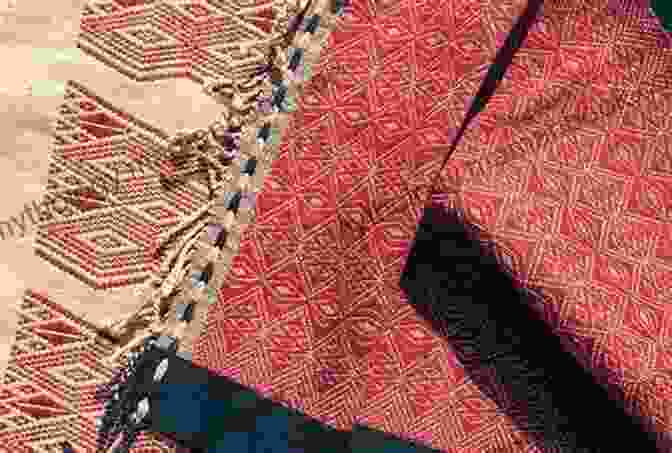
References:
- Elwin, V. (1969). The Nagas in the Nineteenth Century. Oxford University Press.
- Mills, J. P. (1991). The Art of Manipur: Ritual and Cosmic Order. Oxford University Press.
- Naga Peoples' Movement for Human Rights. (2016). Naga Heritage: A Living Tradition. Kohima: Naga Peoples' Movement for Human Rights.
5 out of 5
| Language | : | English |
| File size | : | 730 KB |
| Text-to-Speech | : | Enabled |
| Screen Reader | : | Supported |
| Enhanced typesetting | : | Enabled |
| Word Wise | : | Enabled |
| Print length | : | 21 pages |
| Lending | : | Enabled |
Do you want to contribute by writing guest posts on this blog?
Please contact us and send us a resume of previous articles that you have written.
 Top Book
Top Book Novel
Novel Fiction
Fiction Nonfiction
Nonfiction Literature
Literature Paperback
Paperback Hardcover
Hardcover E-book
E-book Audiobook
Audiobook Bestseller
Bestseller Classic
Classic Mystery
Mystery Thriller
Thriller Romance
Romance Fantasy
Fantasy Science Fiction
Science Fiction Biography
Biography Memoir
Memoir Autobiography
Autobiography Poetry
Poetry Drama
Drama Historical Fiction
Historical Fiction Self-help
Self-help Young Adult
Young Adult Childrens Books
Childrens Books Graphic Novel
Graphic Novel Anthology
Anthology Series
Series Encyclopedia
Encyclopedia Reference
Reference Guidebook
Guidebook Textbook
Textbook Workbook
Workbook Journal
Journal Diary
Diary Manuscript
Manuscript Folio
Folio Pulp Fiction
Pulp Fiction Short Stories
Short Stories Fairy Tales
Fairy Tales Fables
Fables Mythology
Mythology Philosophy
Philosophy Religion
Religion Spirituality
Spirituality Essays
Essays Critique
Critique Commentary
Commentary Glossary
Glossary Bibliography
Bibliography Index
Index Table of Contents
Table of Contents Preface
Preface Introduction
Introduction Foreword
Foreword Afterword
Afterword Appendices
Appendices Annotations
Annotations Footnotes
Footnotes Epilogue
Epilogue Prologue
Prologue Robert Asprin
Robert Asprin Sue Vincent
Sue Vincent Lissa Alexander
Lissa Alexander Claudia Black
Claudia Black Tricia D Wagner
Tricia D Wagner Phillip Keveren
Phillip Keveren Ann Bond
Ann Bond Michael Jecks
Michael Jecks George Roland Wills
George Roland Wills Todd Gitlin
Todd Gitlin Drew Hayden Taylor
Drew Hayden Taylor Fern Britton
Fern Britton Michael Perry
Michael Perry Mike Tinder
Mike Tinder Tarin Lex
Tarin Lex Lila Kossyvaki
Lila Kossyvaki William Stixrud
William Stixrud Apeh Alexandra Ojima
Apeh Alexandra Ojima Sean Kenney
Sean Kenney Jacques Futrelle
Jacques Futrelle
Light bulbAdvertise smarter! Our strategic ad space ensures maximum exposure. Reserve your spot today!

 Henry JamesDon't Tell Me to Be Quiet: Shattering the Glass Ceiling and Empowering Women...
Henry JamesDon't Tell Me to Be Quiet: Shattering the Glass Ceiling and Empowering Women...
 Geoffrey BlairIs Social Label the Answer? A Comprehensive Exploration of the Ethical and...
Geoffrey BlairIs Social Label the Answer? A Comprehensive Exploration of the Ethical and... Gabriel BlairFollow ·16.3k
Gabriel BlairFollow ·16.3k James HayesFollow ·15.6k
James HayesFollow ·15.6k H.G. WellsFollow ·7.1k
H.G. WellsFollow ·7.1k Leo TolstoyFollow ·5.4k
Leo TolstoyFollow ·5.4k Derek CookFollow ·15k
Derek CookFollow ·15k Anthony WellsFollow ·3.9k
Anthony WellsFollow ·3.9k Jeffrey CoxFollow ·6.9k
Jeffrey CoxFollow ·6.9k Easton PowellFollow ·8k
Easton PowellFollow ·8k
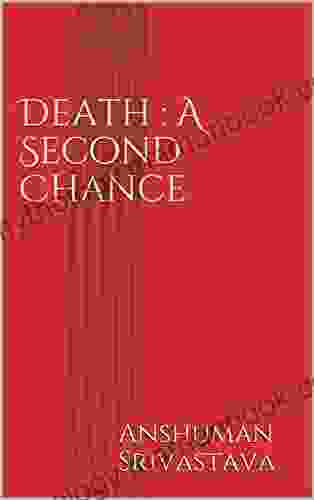
 Christopher Woods
Christopher WoodsDeath's Second Chance: The Unbelievable Story of Cris...
On July 29, 2008, Cris...

 Esteban Cox
Esteban CoxFrom Ralphie Kids to Adolescents: The Journey to Manhood
The transition from...

 Chris Coleman
Chris ColemanLetters From Young Father Poems: Delving into the Heart...
Fatherhood, a journey filled...

 Holden Bell
Holden BellCounterintuitive Marketing: Achieving Great Results Using...
In the ever-evolving world of...
5 out of 5
| Language | : | English |
| File size | : | 730 KB |
| Text-to-Speech | : | Enabled |
| Screen Reader | : | Supported |
| Enhanced typesetting | : | Enabled |
| Word Wise | : | Enabled |
| Print length | : | 21 pages |
| Lending | : | Enabled |


